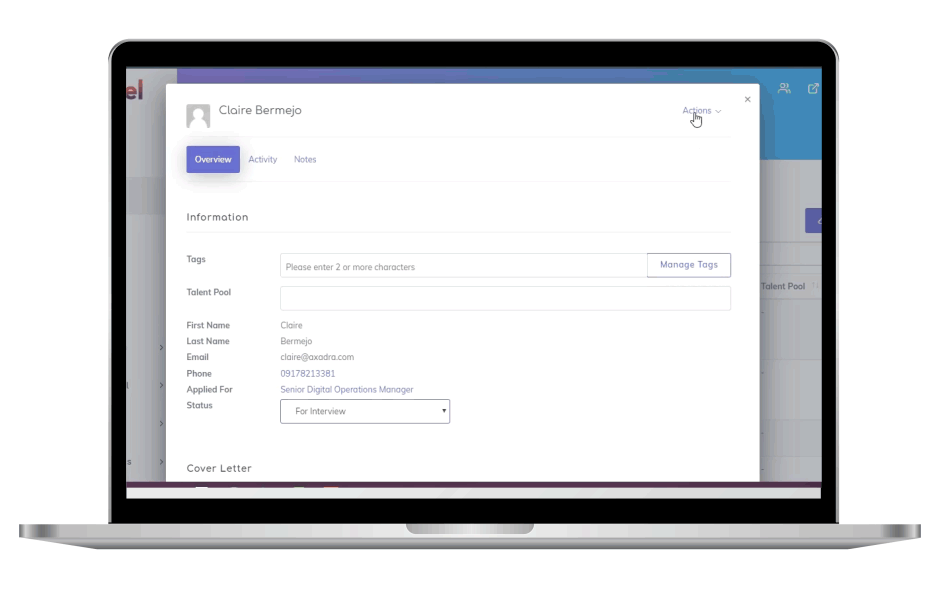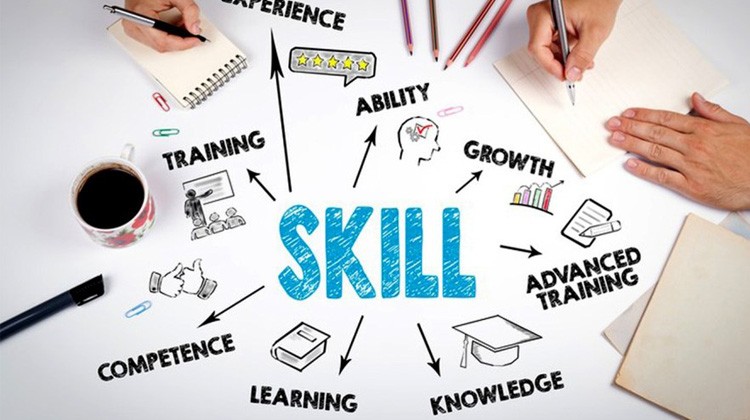As the global economy experiences the full economic impact of the coronavirus pandemic, companies are scrambling to adapt to an unprecedented environment. Social distancing practices have dramatically lowered purchase and consumption, and governments have shut down whole commercial centers to stop the spread of Covid-19. As countries register waves of unemployment– the U.S. has hit a staggering 26.5 million people who have filed for unemployment benefits– this seems like far from an ideal environment for companies to be hiring and improving recruitment processes. But there are some sectors that are stepping up their hiring.
While hotels and restaurants and other businesses that depend on people being out and about are shuttered, others are taking advantage of a surge in business. Online retail giant Amazon is hiring 100,000 workers to meet with this demand, and Walmart is looking to increase their labor pool by 150,000, many of them for temporary or part-time positions.
Industries that are hiring during Covid-19
The growth isn’t just limited to the big players. Aside from the obvious gainers like groceries and delivery services, other companies in different industries are also seeing growth:
- Cleaning services
- Telecommunications
- Liquor and wine
- Meal preparation
- Game app developers
Opportunities do exist in the market for growth and expansion, but this then begs the question for the HR and Recruitment departments of these companies: how do you hire during a pandemic?
Addressing the Challenges of Human Resources in 2020
Social distancing measures are here to stay. Some experts even predict that social distancing will be required all the way to 2022 to avoid overloading hospital and healthcare systems. With that prospect, there is a clear challenge for companies to look for ways to improve recruitment and selection processes now to align with the future. To do this, we will have to revisit the way that we source, assess, hire and onboard new employees.
“Embrace the new truth of recruiting: You don’t pick the talent, your talent picks you”
Use Social Media for Candidate Sourcing
As jobseeker behavior changes, the way we find candidates also has to change. One thing to consider is that currently-employed people are less likely to change jobs during a crisis, so it may prove difficult to find a passive turn-key candidate who can fill in the role immediately. With unemployment at an all-time high, the focus should be on getting talent from those laid off by their companies shutting down. With companies forced to do mass layoffs to keep afloat, Human Resources should look at getting candidates from related or adjacent fields and roles and developing them for the position.
Also consider the nature of the jobseeker: a major part of the workforce now comes from the millenial generation.
What does this mean to a recruiter? Millenials find their jobs online. A World of Work study conducted by global employment website Monster.com broke down how many of 4100 respondents across Europe used online recruitment platforms:
- Job Boards (65%)
- Corporate site career pages (44%)
- Social media sites for professionals such as LinkedIn and Glassdoor (31%)
- Search Engines like Google, Bing, or Yahoo (31%)
The takeaway is that sourcing now has to happen online more than ever. Embrace the new truth of recruiting: You don’t pick the talent, your talent picks you. So create a candidate profile and get aggressive with advertising the position online, and be where your candidates are.
Indeed is one of the most popular job boards, with 250 million people visiting their site every month. With an easy to use search function that requires just a job title, keyword, and location, jobseekers can find postings from more than 3 million companies worldwide. In a marketplace that big, however, your company may get lost in the crowd unless you make sure you optimize your job listing so that you stand a better chance in showing up during job searches.

While Facebook isn’t made for professional networking like LinkedIn, you can’t argue with numbers: Facebook has 2 billion users to LinkedIn’s 500 million, and with that kind of volume, you stand a good chance of finding people who would fit your candidate profile.
Because of its nature, recruiting on Facebook isn’t as straightforward as LinkedIn. It’s important to cultivate your brand and promote your company culture. Digital marketing company Hubspot, for example doesn’t just have a Careers page like most companies. They’ve taken an in-bound marketing approach to recruitment with their HubSpot Life page, with webinars, photos of employee life, and marketing-related resources that attract candidates because the page has content that they naturally want to interact with.
To save time and keep your HR team lean, there are social media integrated recruitment software solutions available on the market, which will let you manage all your social media posts and scheduling on one platform.
Remote Interviewing/Testing
We may not be doing any handshaking for a while, as doing face to face meetings have gone the way of restaurants, bars, and movies: gone for the foreseeable future, and won’t be the same afterward.
As everyone practices social distancing, online video interviews will become more and more prevalent as well. This isn’t a new trend- since 2011, the number of employers conducting interviews has risen. Before the virus, 47% of respondent companies were already doing interviews online, according to a 2019 survey conducted by the Institute of Student Employers. The pandemic will only hasten the global adoption of the technique across all companies.
So how will you incorporate remote interviews in your recruitment process improvement plan?
By and large, video interviews aren’t that much different from face-to-face. Here are just a few best practices for conducting a successful video interview:
Do regular equipment checks. Hardware issues with your audio or video equipment can come up, and when they do, they can be showstoppers. Zoom and Skype both have testing capabilities that make sure your equipment is working properly before a call. There are also online third-party testing platforms available, if your conferencing software doesn’t have the feature.
Check your connection. An extremely important requirement isn’t just download speed (data from the internet to your computer), which your internet service provider usually advertises, but upload speed (data from your computer to the internet). Low upload speeds will cause your video to be distorted or pixelated, or your voice to frequently cut out or lag, causing you and your interviewee to talk over each other. Test your connection speed at different parts of the day. Prioritize getting a stable internet connection for your HR specialists, getting one installed is possible as telecommunications workers are considered essential services during the pandemic.
Lighting and camera angle. A disadvantage to video interviews is that there is less eye contact and body language that are essential to assessing your candidate. Mitigate this by installing your webcam as close to the image of the other person as possible– this will make maintaining eye contact easier, and also put both parties more at ease. Install lighting to look your best and most professional.
HR departments can also leverage other tech solutions for pre-employment testing and assessment to find the right candidate for a job. Many companies already have exams that can be taken online, with their own online testing portals, or using third parties like Google Forms or Surveymonkey to give tests and collect results easily. Some are taking testing technology to the extreme, like Lloyds Banking Group, which uses virtual reality assessments with full 360-degree movement to test the 20,000 applicants that they get a year.
We’re not telling you to jump into virtual reality testing just yet– only to be open to the technological possibilities and alternatives that are now on offer.
Prepare pandemic job interview questions
This is something that wasn’t present in your previous recruitment or hiring process, but as companies are increasingly working from home while the world tries to get the COVID-19 pandemic under control, it’s good to ask candidates some questions concerning their ability to work during the outbreak. For instance, questions such as “What have you learned about yourself during the pandemic?” can help you assess a candidate’s emotional intelligence, resilience, and motivation. Another important question to ask is “Can you do the job while working from home?” and “Are you willing to work from the office when the quarantine or pandemic is over?
 Distance Onboarding and Engagement
Distance Onboarding and Engagement
Even after hiring, training and onboarding will prove to be procedural hurdles an HR department will need to jump to complete the hiring process. This is not a step that you can overlook- HR industry research shows that up to 20 percent of new employees can leave within the first 45 days of employment.
| |
Keeping new employees at home engaged
Create touchpoints. Incorporate interaction in your company’s regular operations to make sure everyone keeps talking to each other. Advertising agency Ogilvy & Mather, for example, gives new hires a green nameplate, which tells other employees that they’re new and to give them a warm welcome. While this strategy won’t apply to online operations, you can apply a similar concept on your company’s chat channels, announcing new arrivals and allotting time for small talk during meets to get them comfortable.
As a human resources specialist, make sure you check in regularly with new hires: schedule check-ins in the first week, first 15 days, then the first month, first 45 days, and first 90 days so you are aware of any difficulties your hire may be experiencing. At the very least, it’ll make them feel like someone is actively looking out for them.
Annual or quarterly reviews aren’t enough, according to Jamie Walters, author of Big Vision, Small Business and founder of Ivy Sea-Sophialon, a business consulting firm.
Document all expectations and processes. Remote onboarding means that the employee doesn’t even get the chance to turn to the person beside them to ask for help. Make sure that all job expectations and daily processes are clearly articulated and taught. And make sure you’re always talking about those expectations.
Customize a long-term onboarding process for the employee. Keep them excited about what they’ll be learning, and how they can gauge if they’re doing well on a day-to-day basis. Your plan should include:
- Expectations
- Goals with definite timeframes
- Initial projects
- Lines of communication
- Resources like tools, point persons, and subject-matter experts they can tap
| |
What will hiring look like after the quarantine?
Hiring, post-pandemic, will be very different from the way it was in 2019. Expect more companies to pivot to doing majority of their sourcing online, as well as stepping up their efforts to enhance the visibility of their online career pages. Interviews, as well as onboarding and performance management, will be done by video conference.
Automated hiring processes, supported by a HR recruitment software, will become the norm as jobseekers take their efforts online.
As the world works to contain Covid-19, companies must learn and plan to adapt to the new realities we will face when businesses begin to reopen. In a written statement, Bill Gates discussed the coronavirus and “semi-normal” life, where he cited how Microsoft in China had begun reopening, but with social distancing measures in place, with only half the company coming in and maintaining work from home for others.
While times are difficult, there are opportunities out there for the companies who are ready to seize them. Optimize your hiring processes to be ready to take in the right people, using tech solutions like online recruitment management software.
The more of your recruitment and hiring processes that you can automate, the more efficient your team will be, and the more equipped your company will be to face the world after Covid-19.
So you may be a small/medium sized business that has seen rapid growth, a larger company looking at changing providers or an established business using old school methods in your recruitment processes, choosing a ATS provider can be a daunting process. Reading through company websites, understanding technical terms, jargon, buzz words etc this can seem overwhelming especially to non IT related companies.
Ready to join the automation revolution and make your recruitment process stress-free for everyone? Email us at marketing@skillfuel.com or sign-up for a FREE trial.






 Distance Onboarding and Engagement
Distance Onboarding and Engagement








